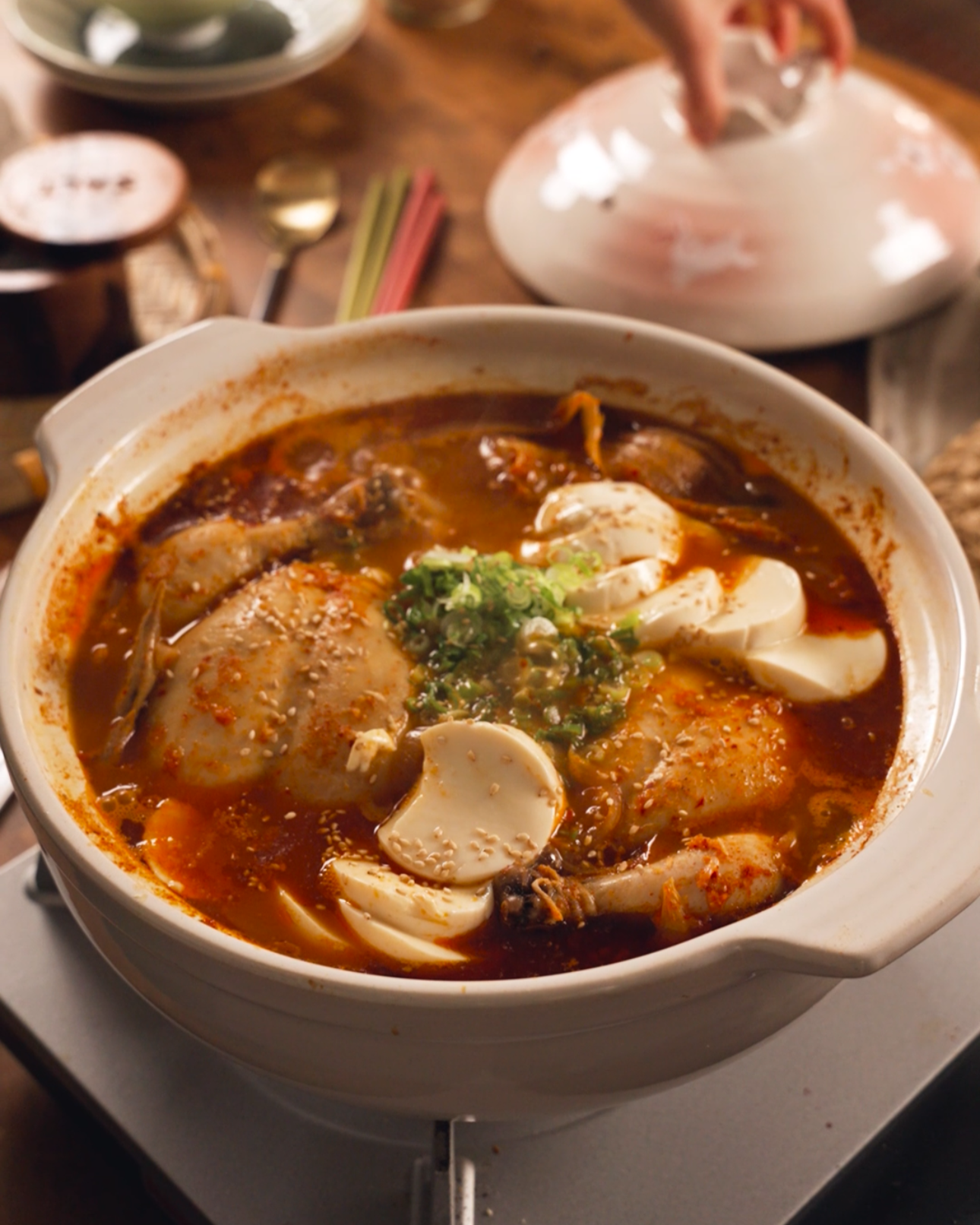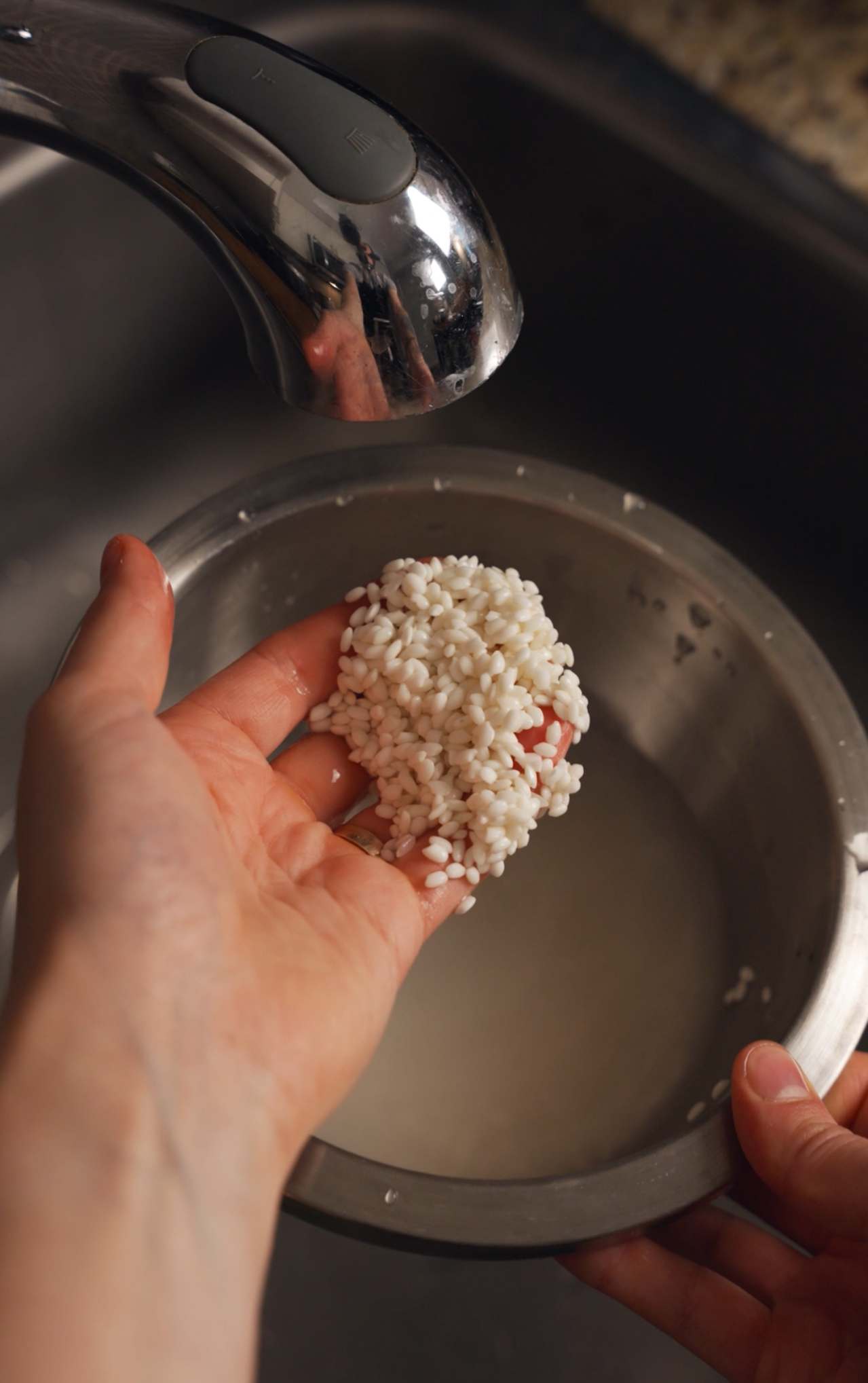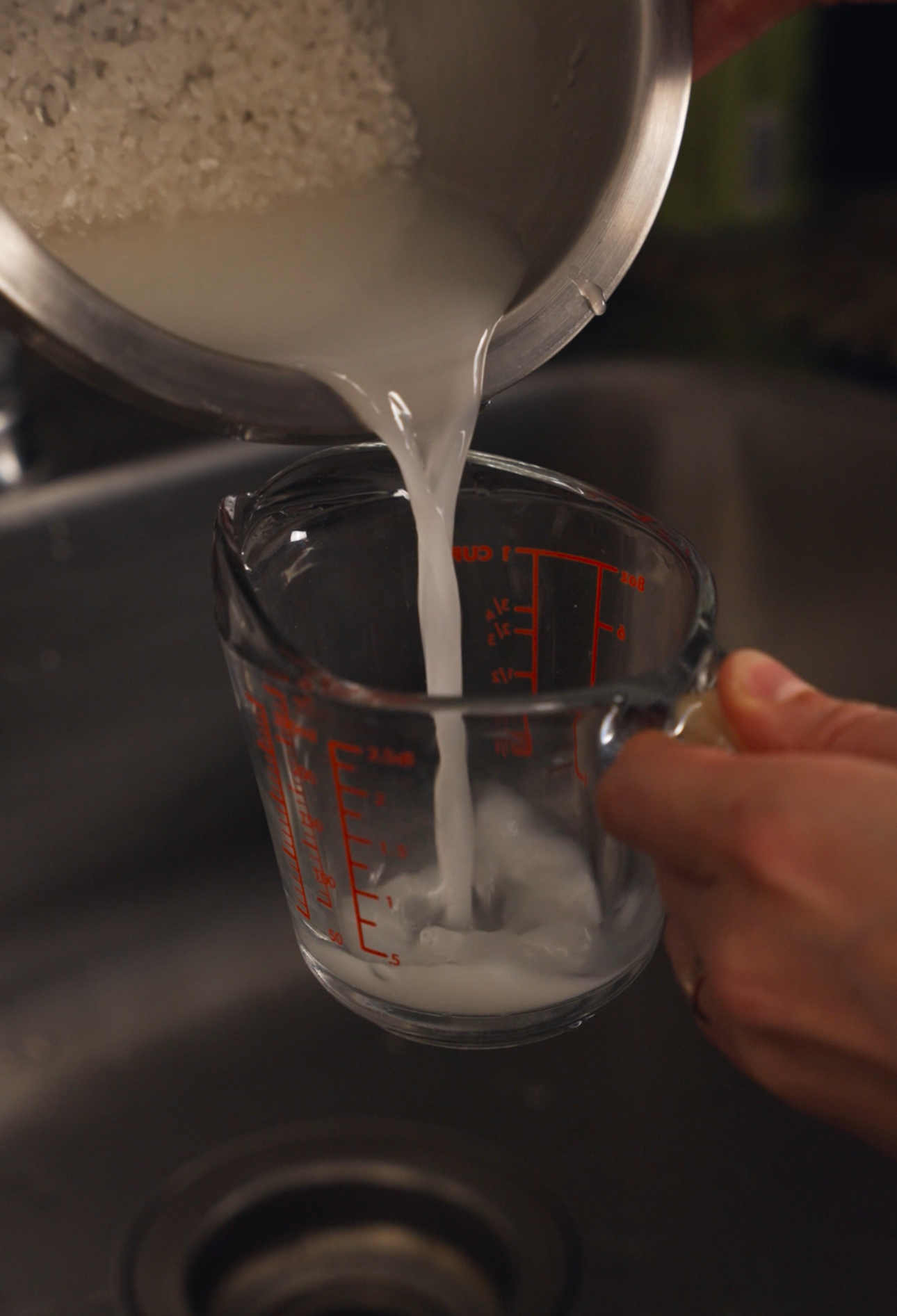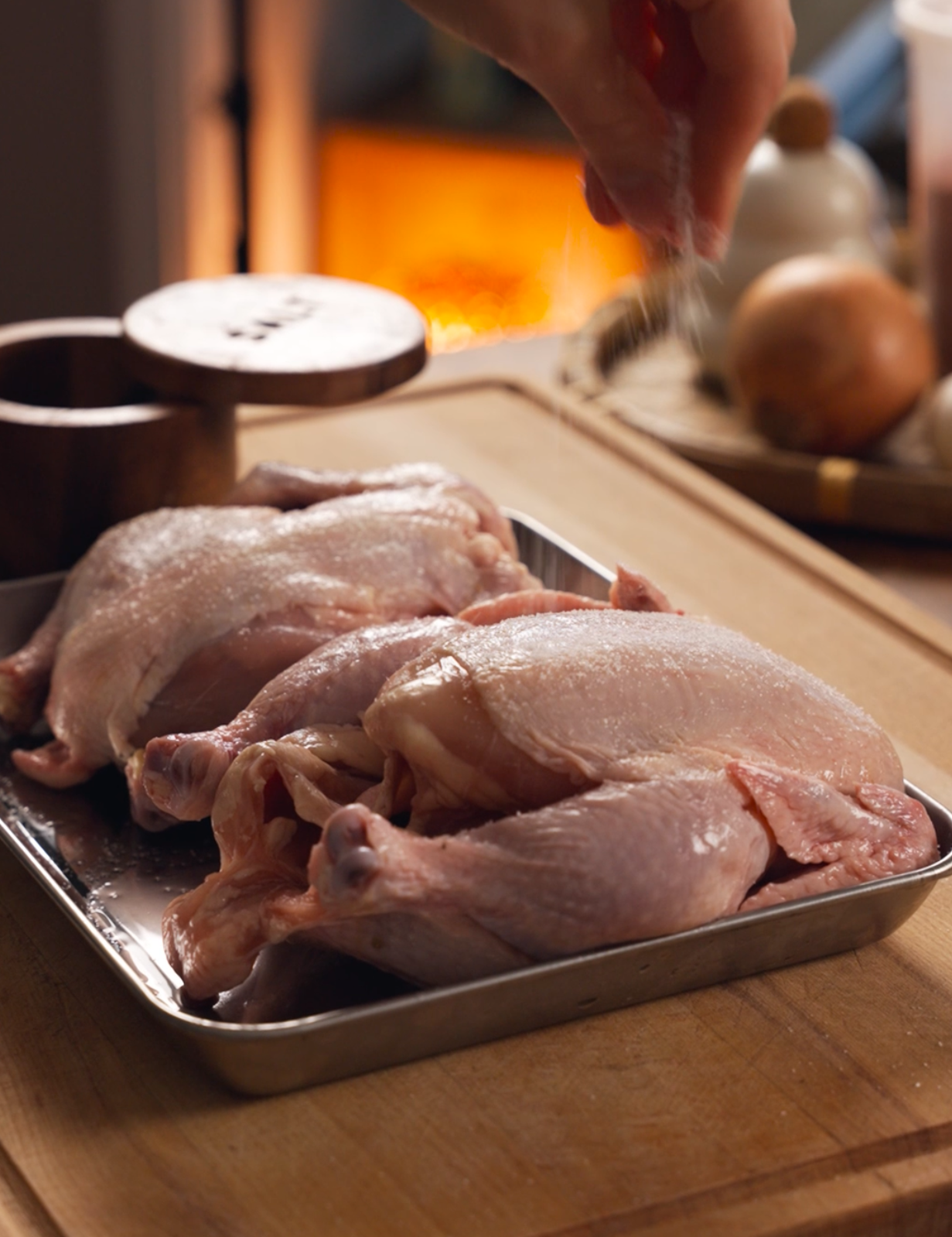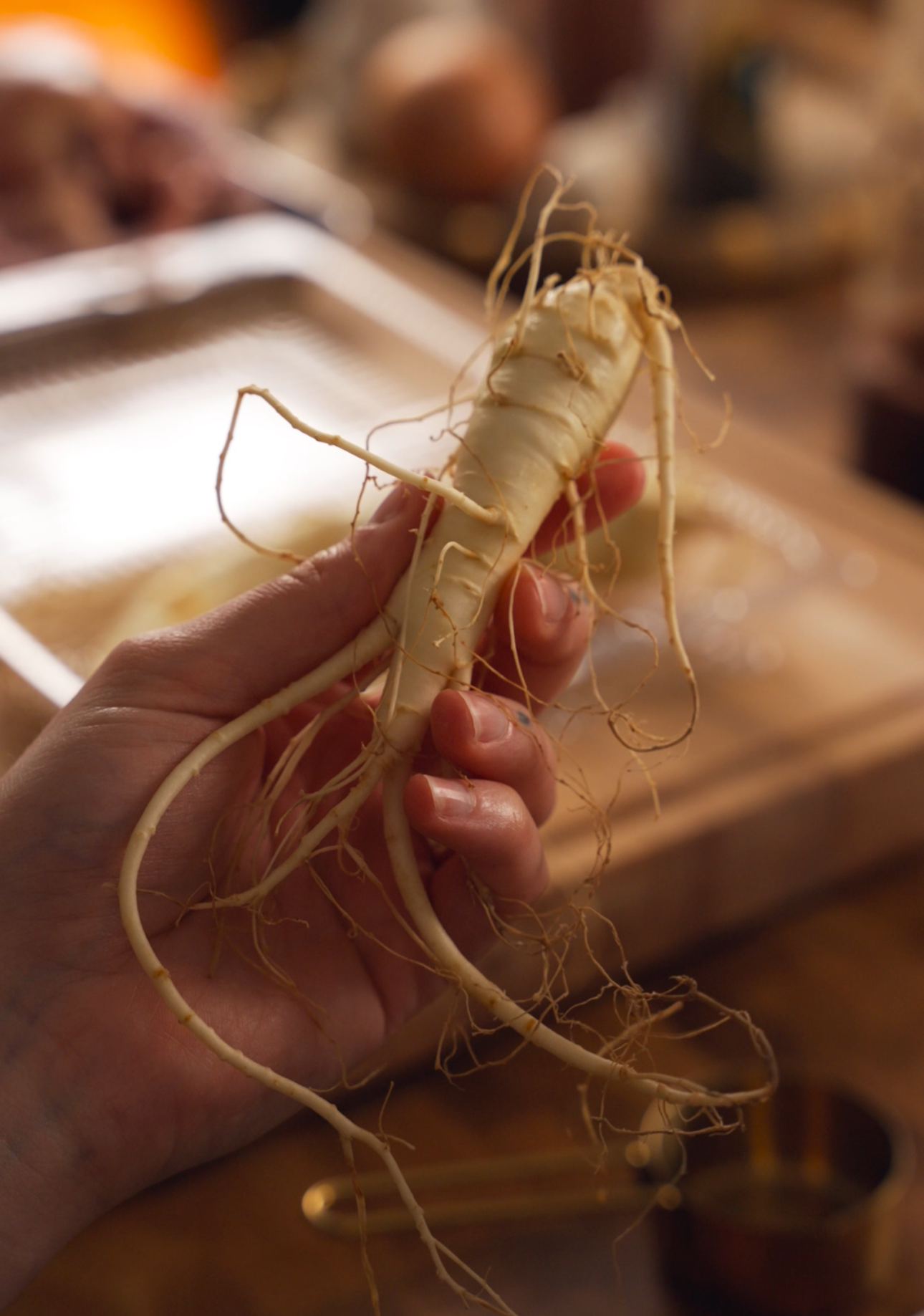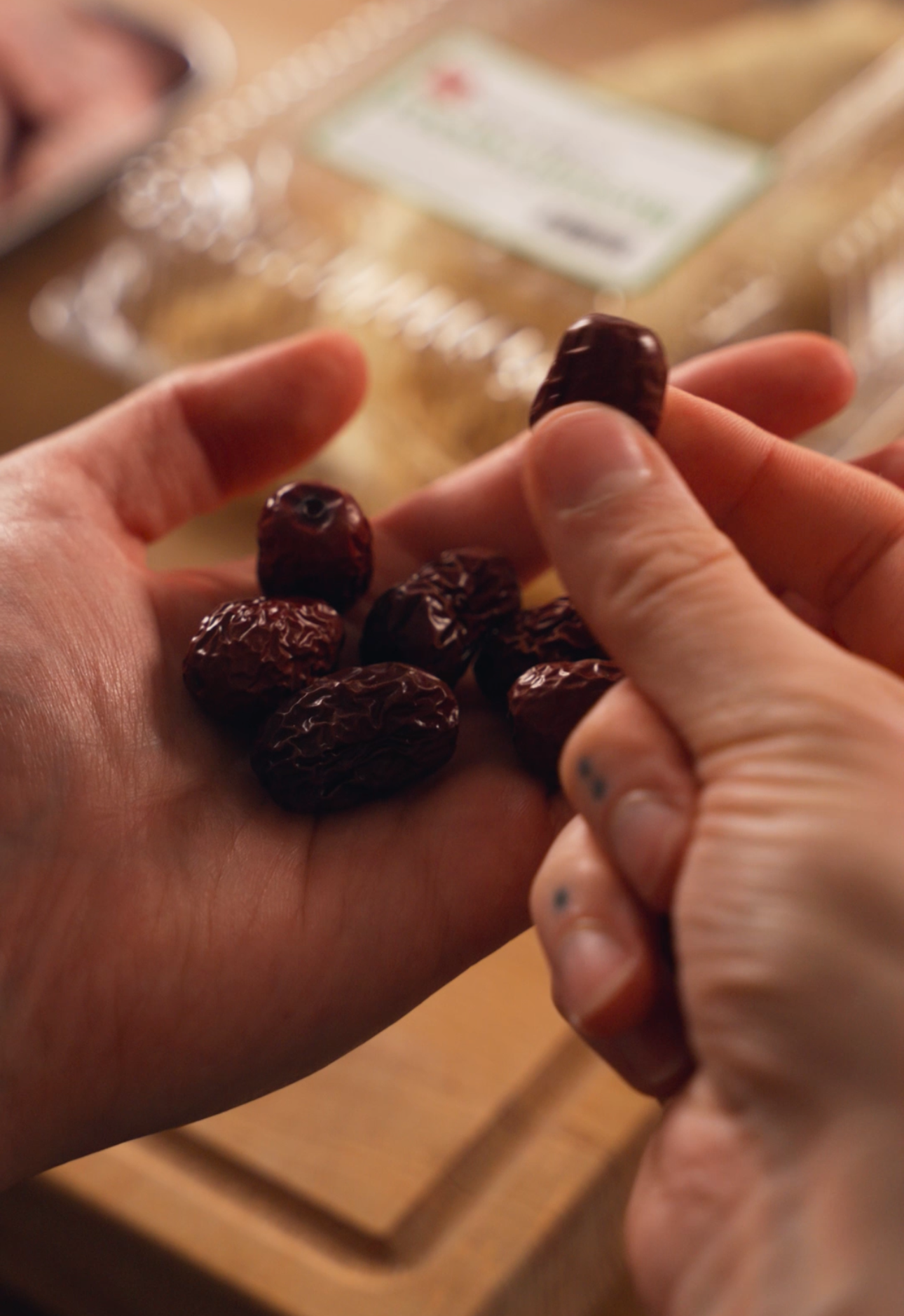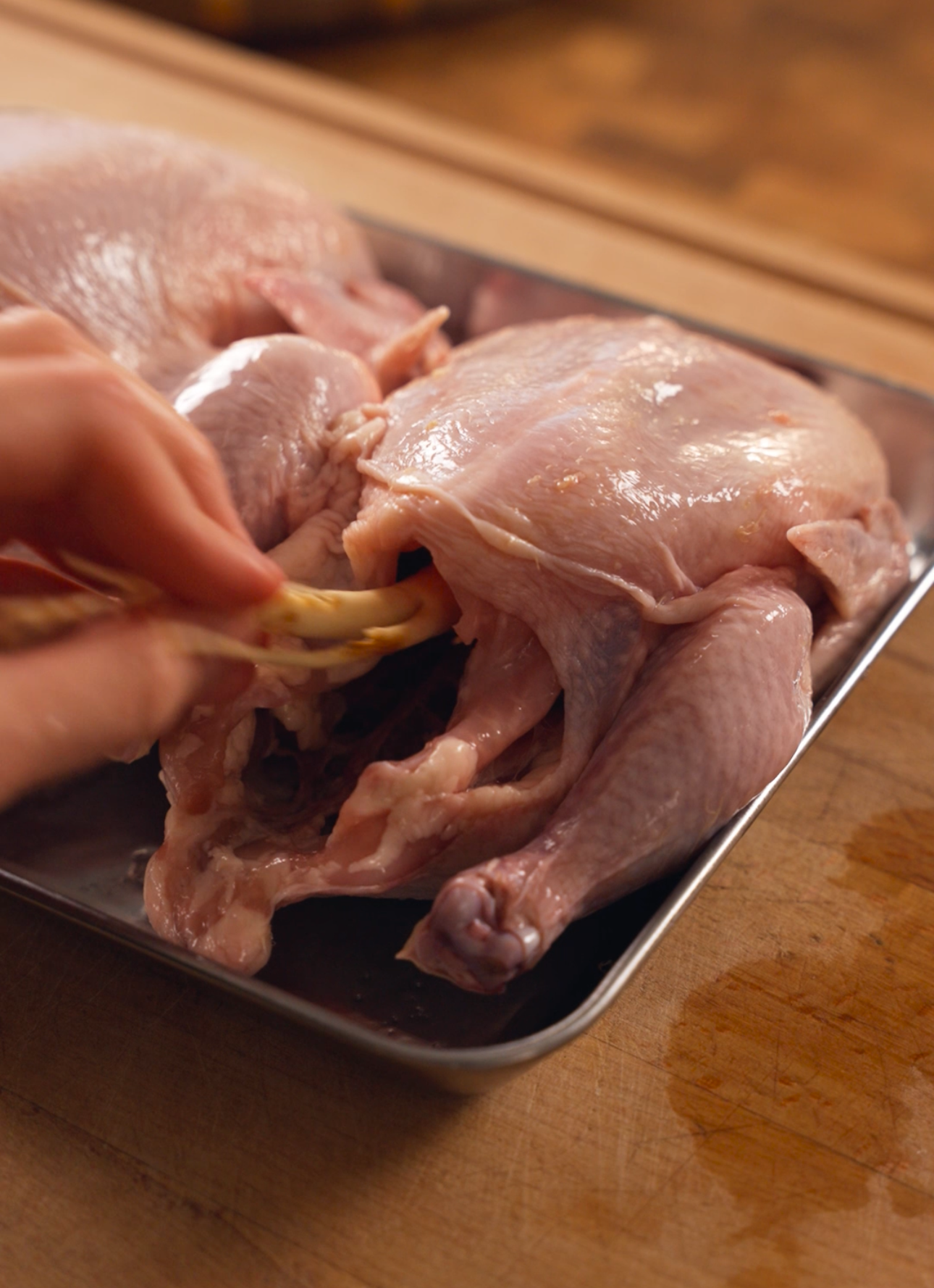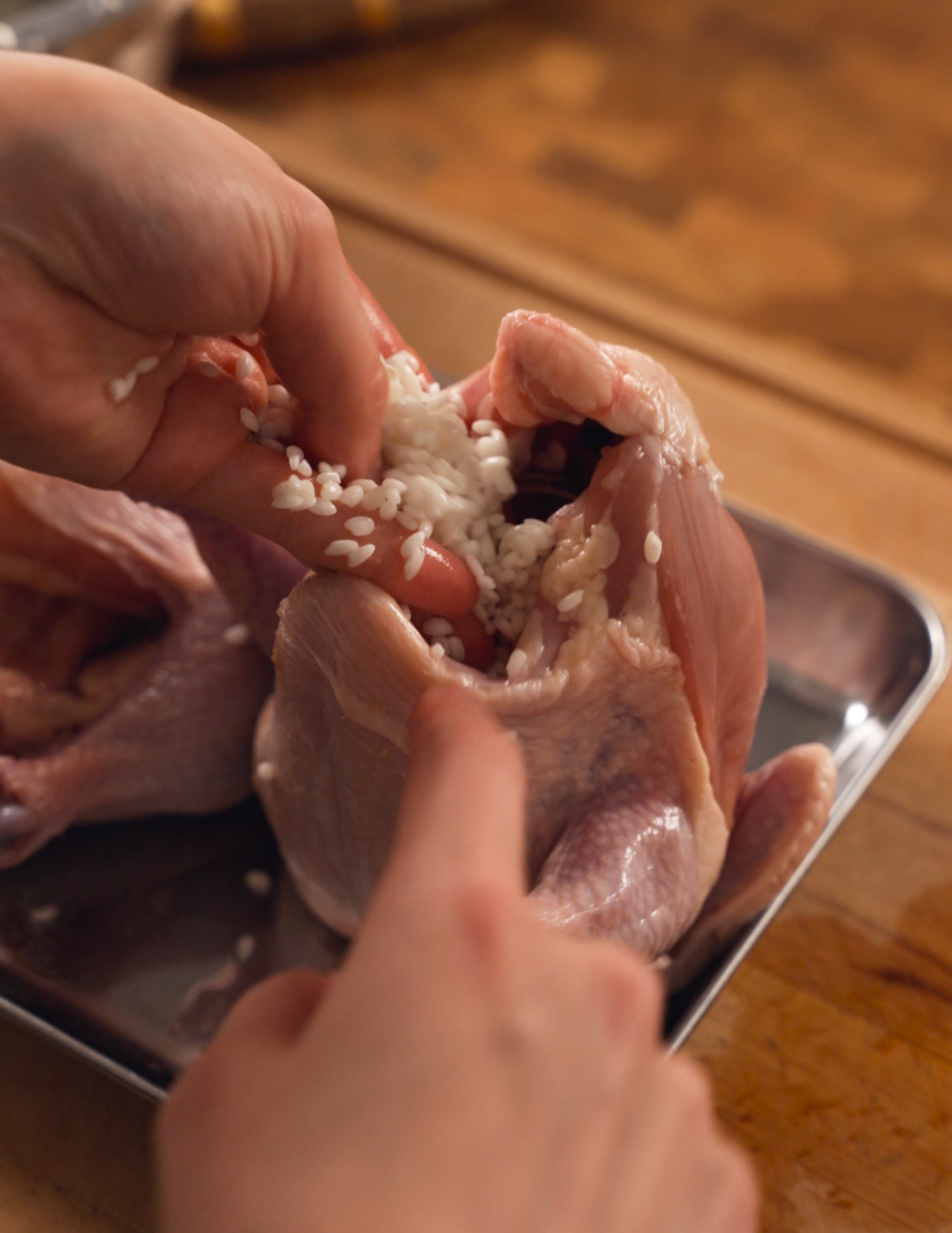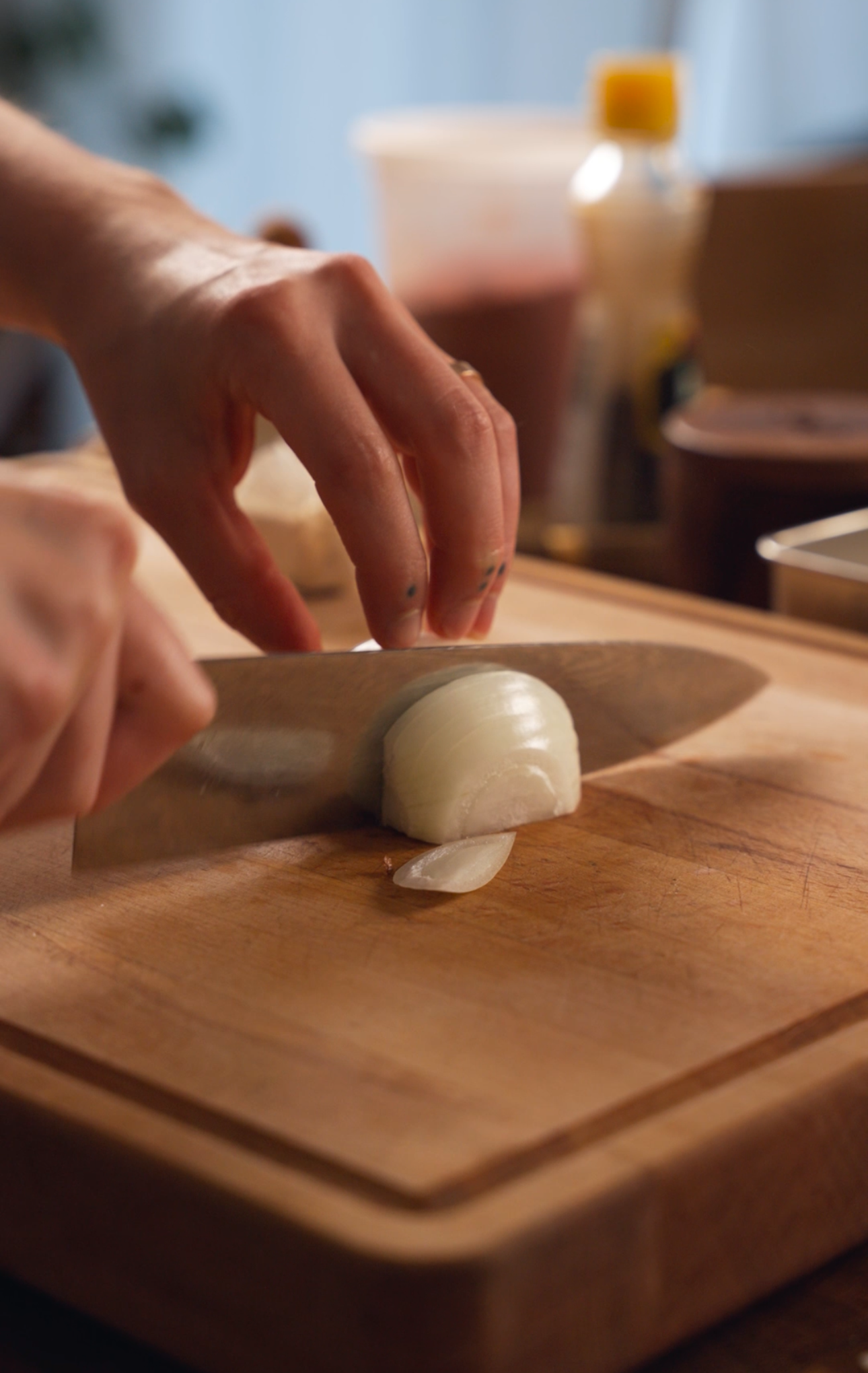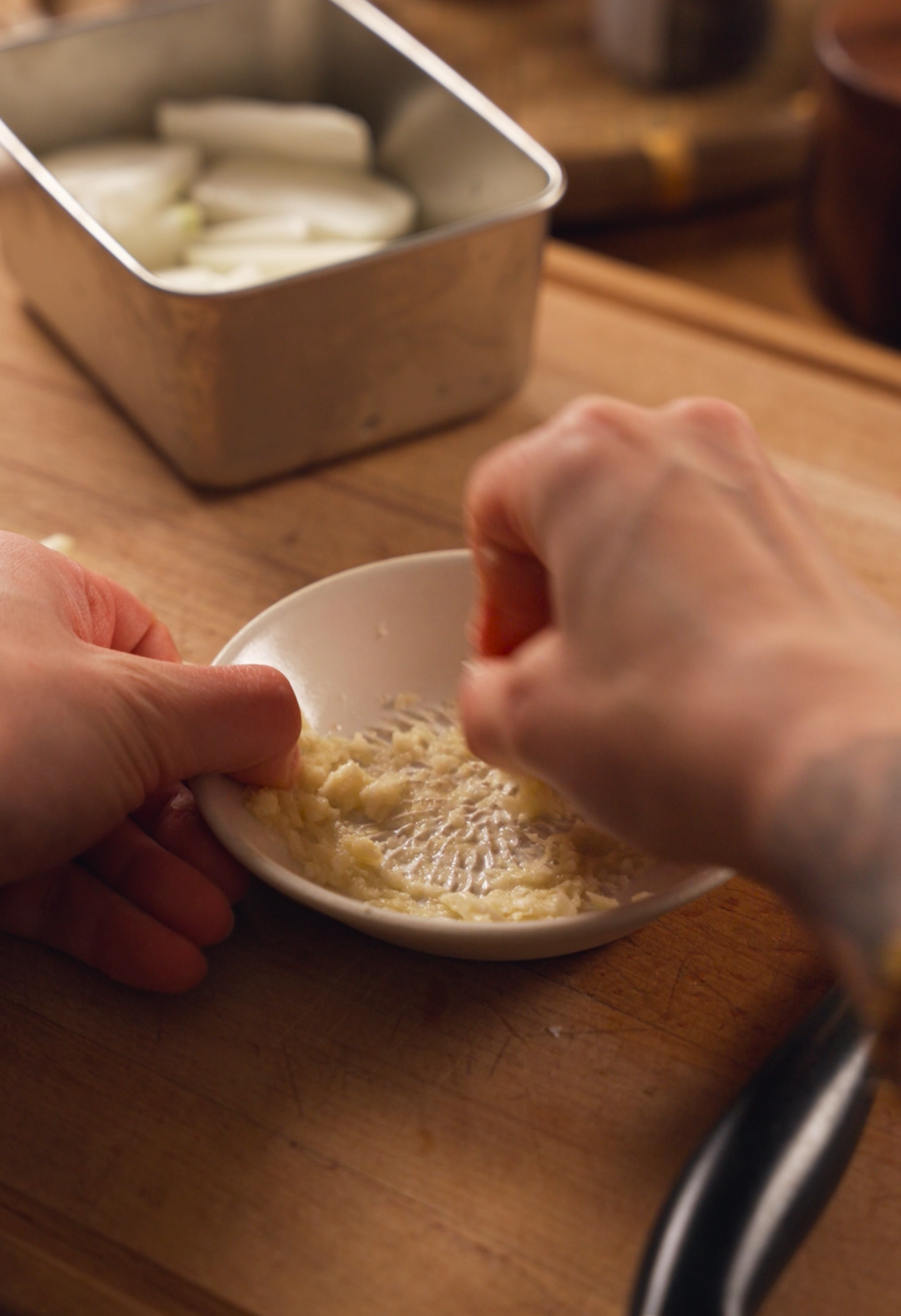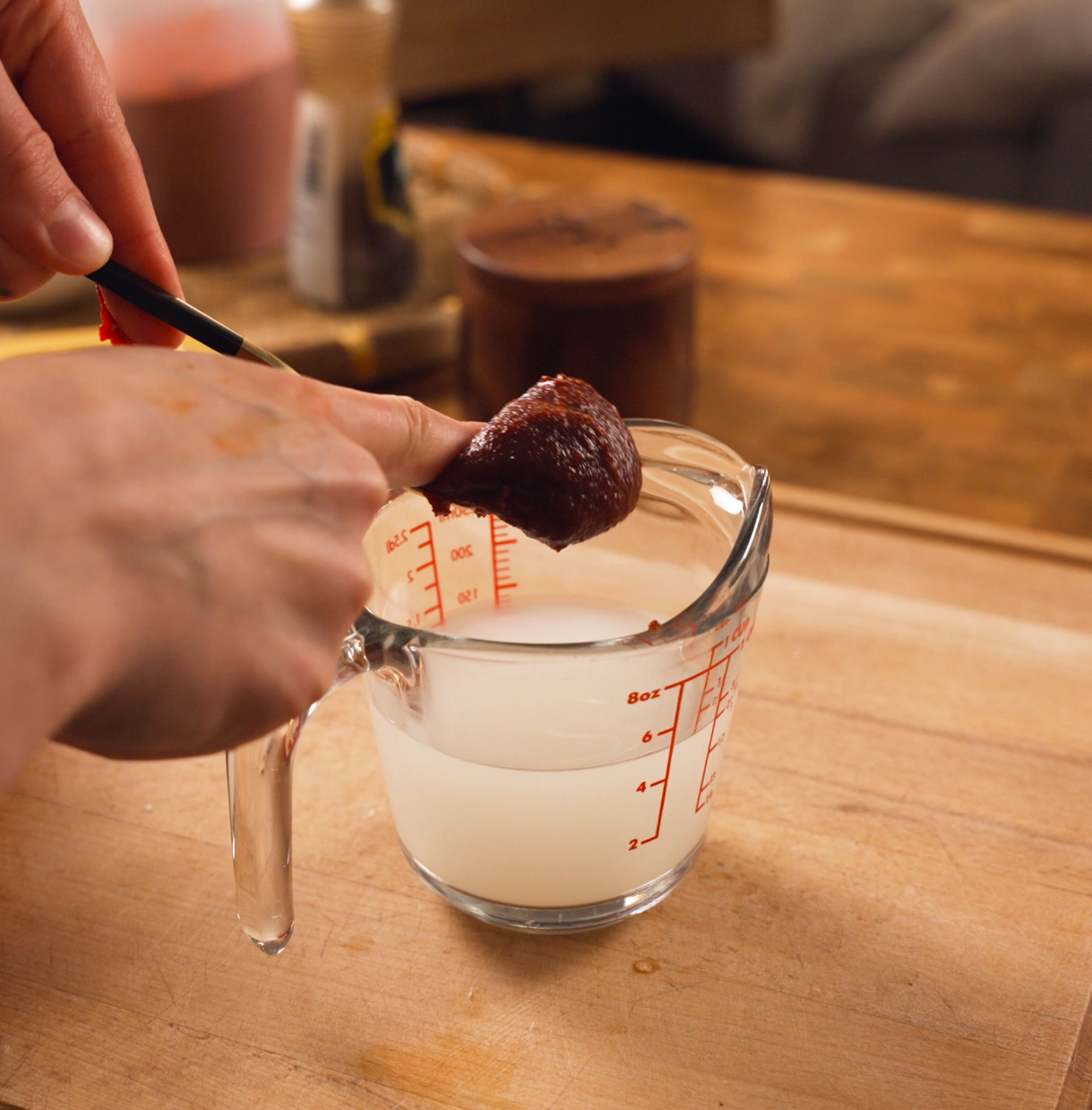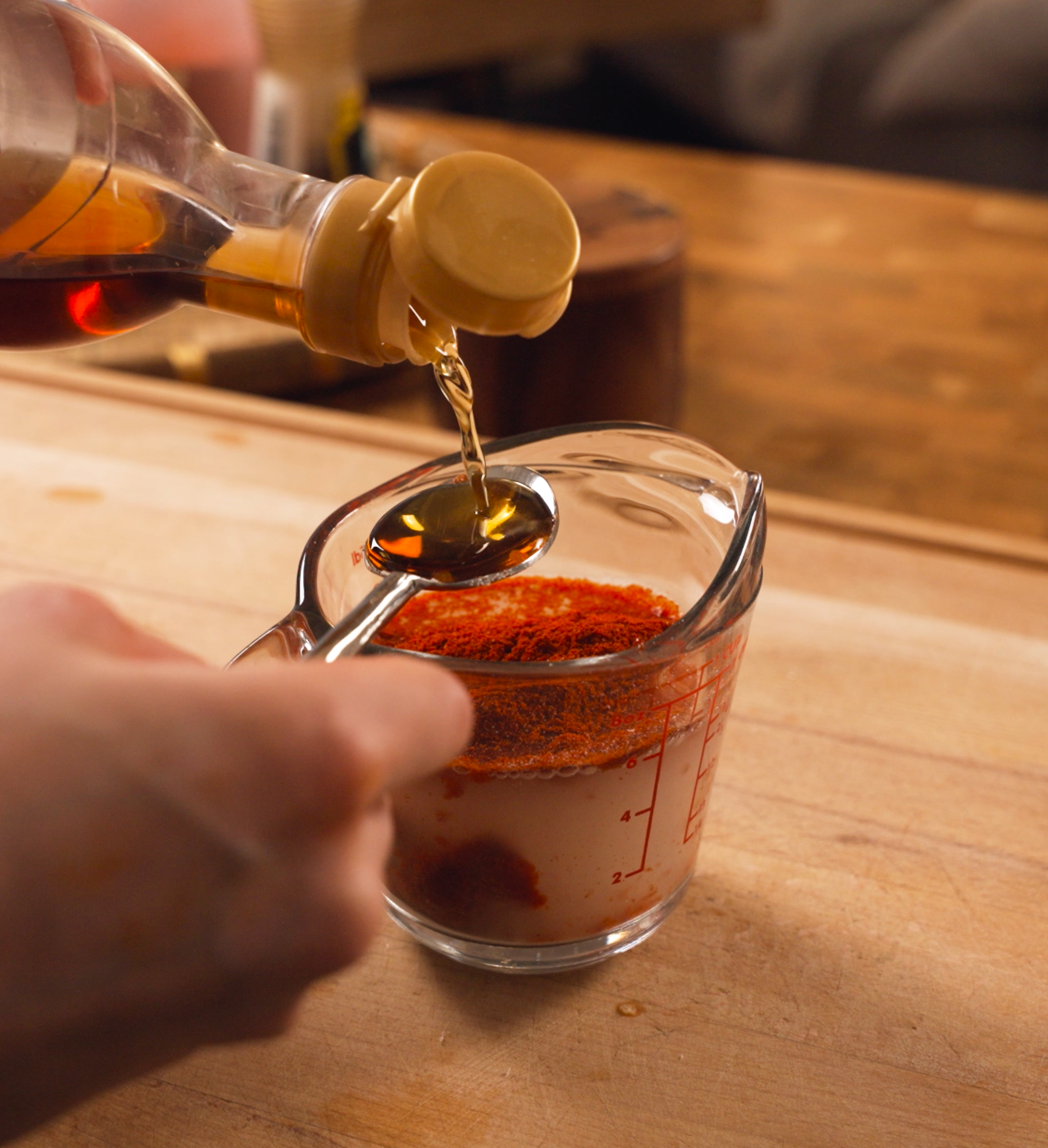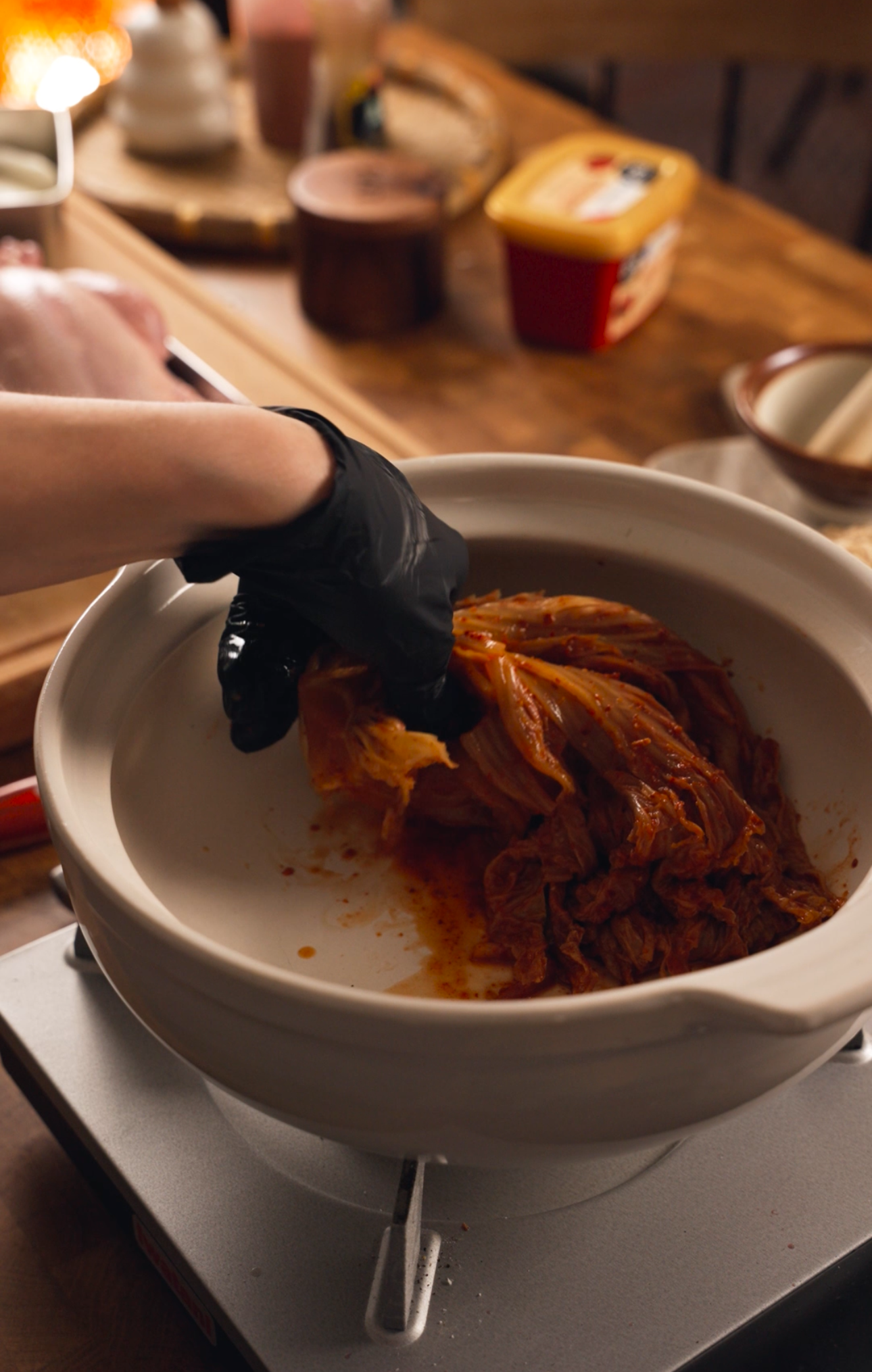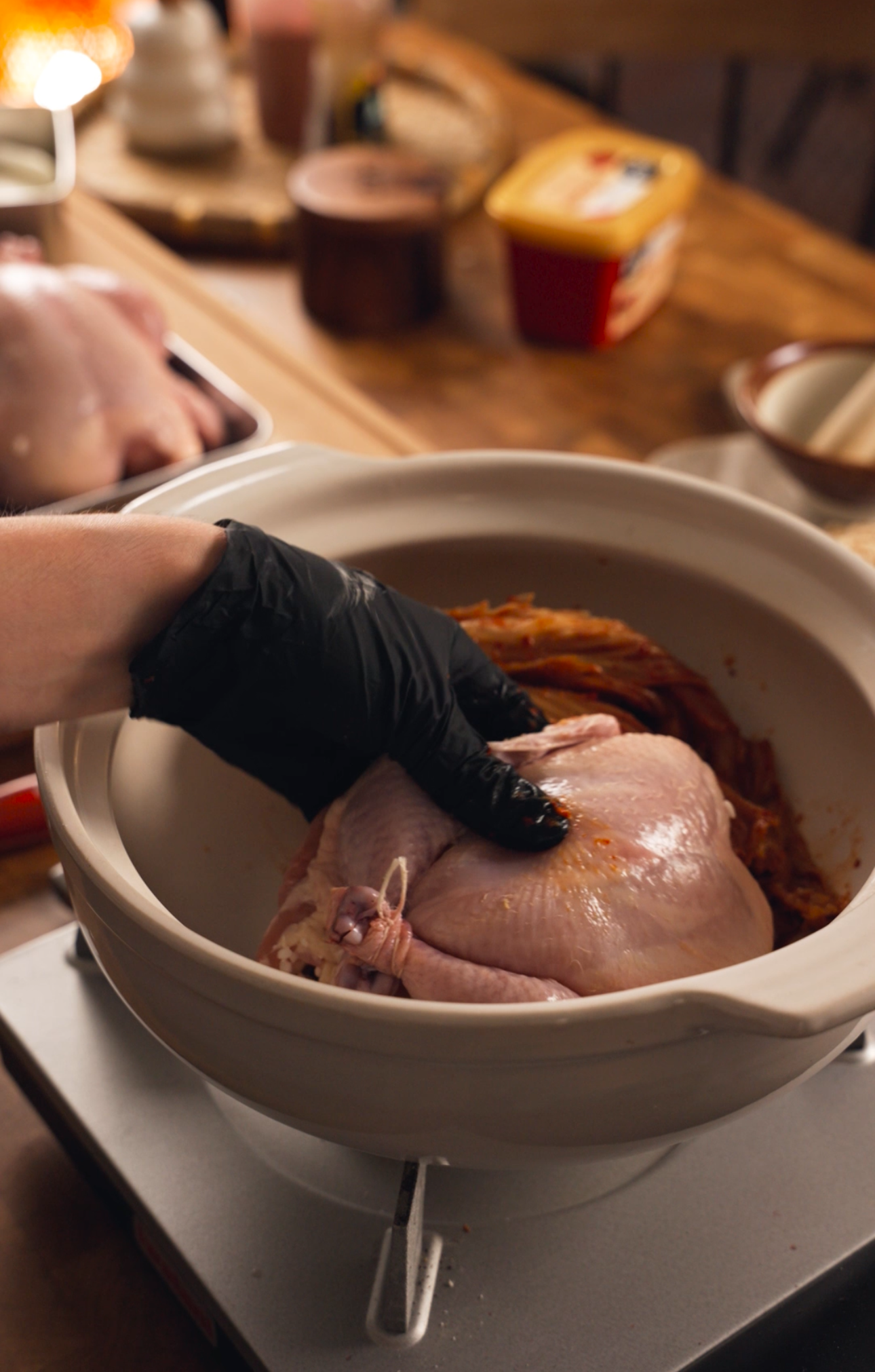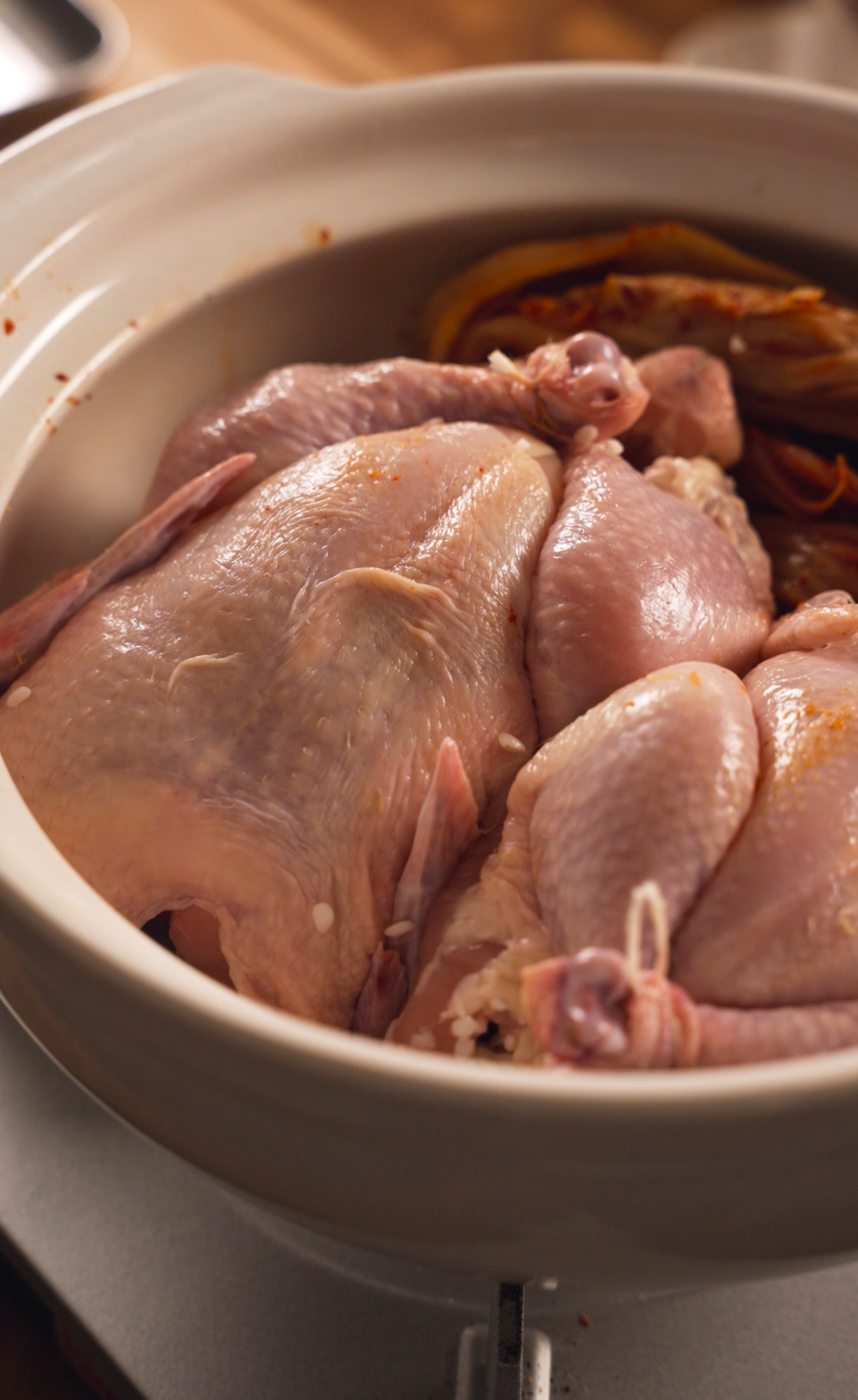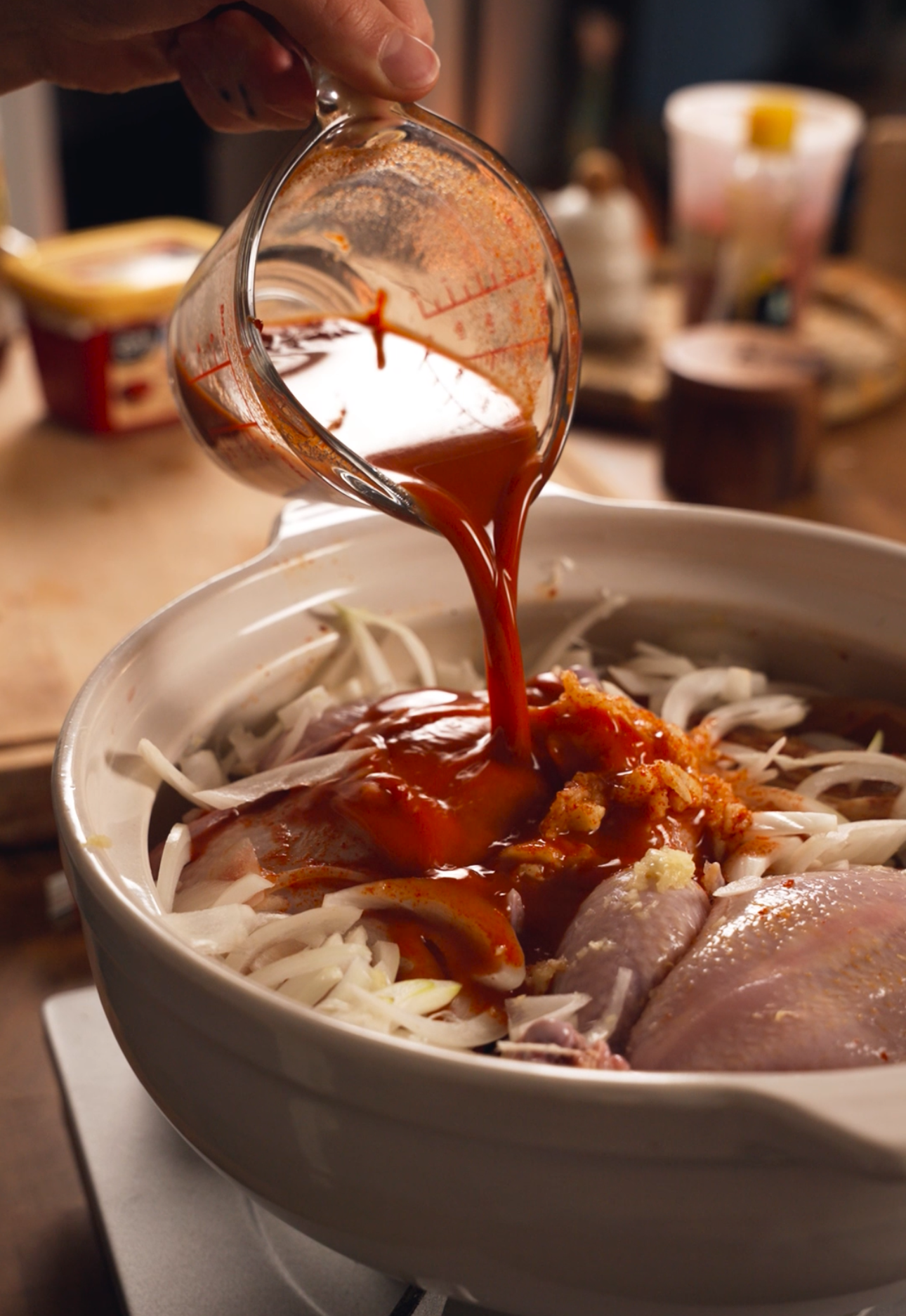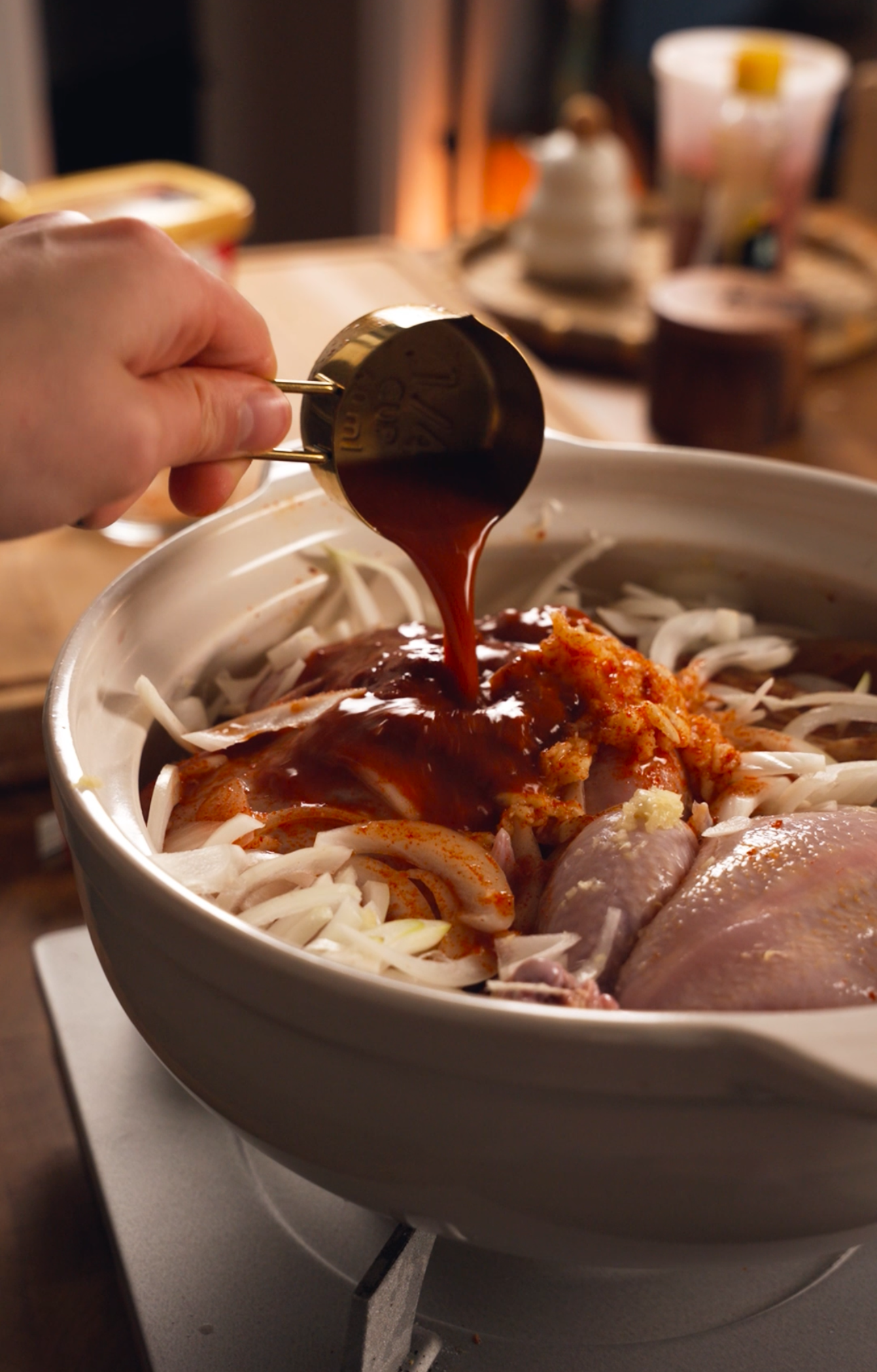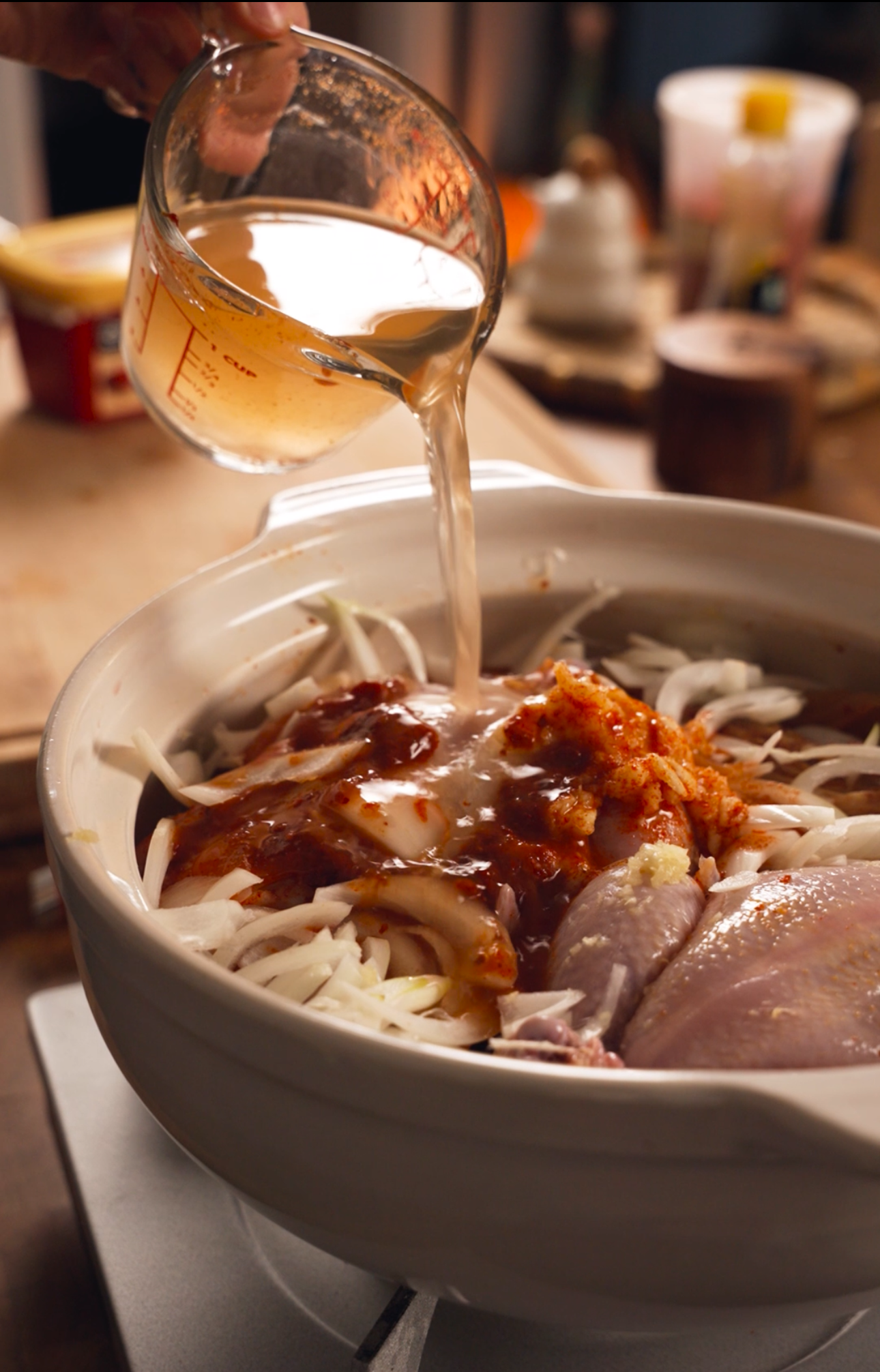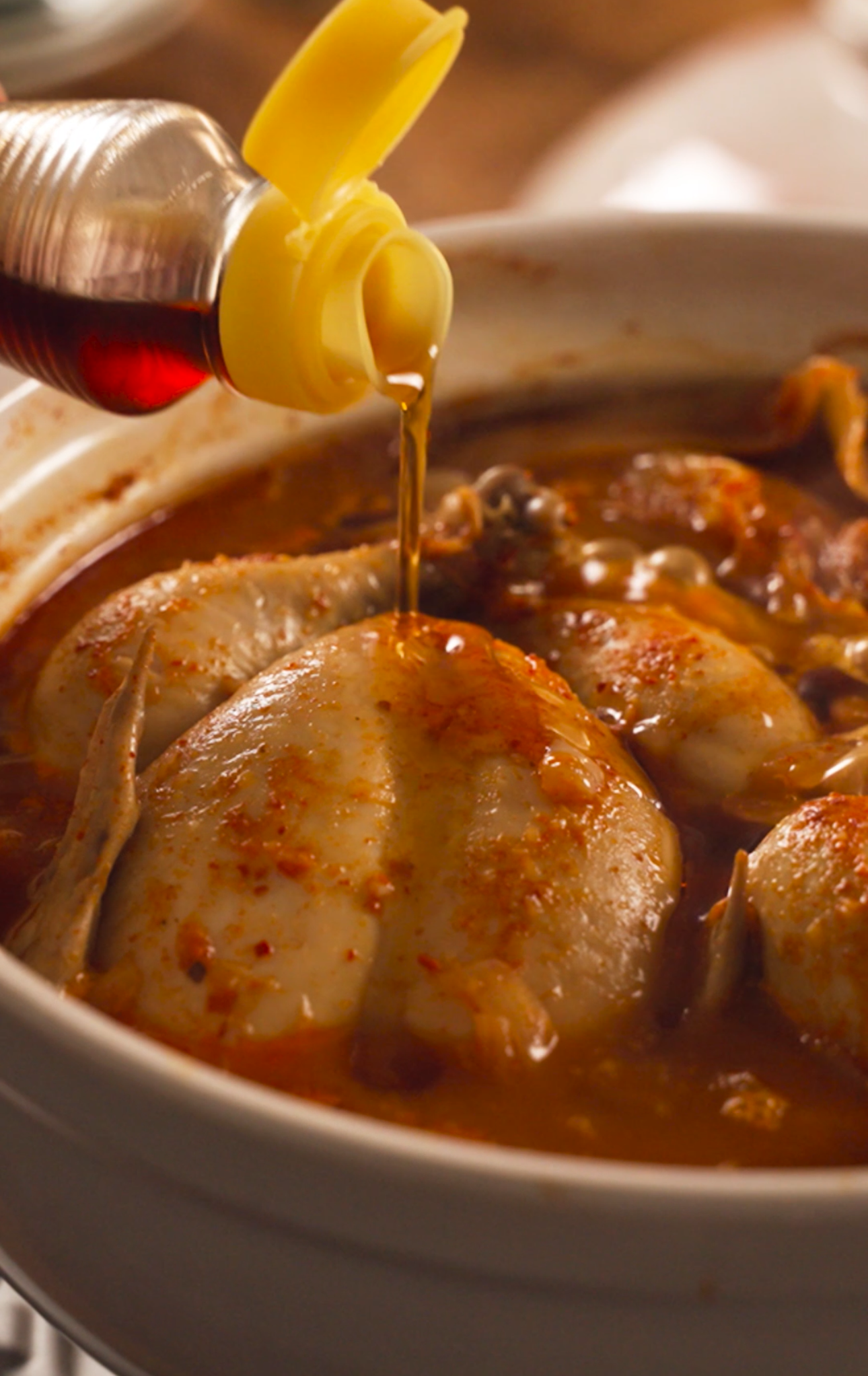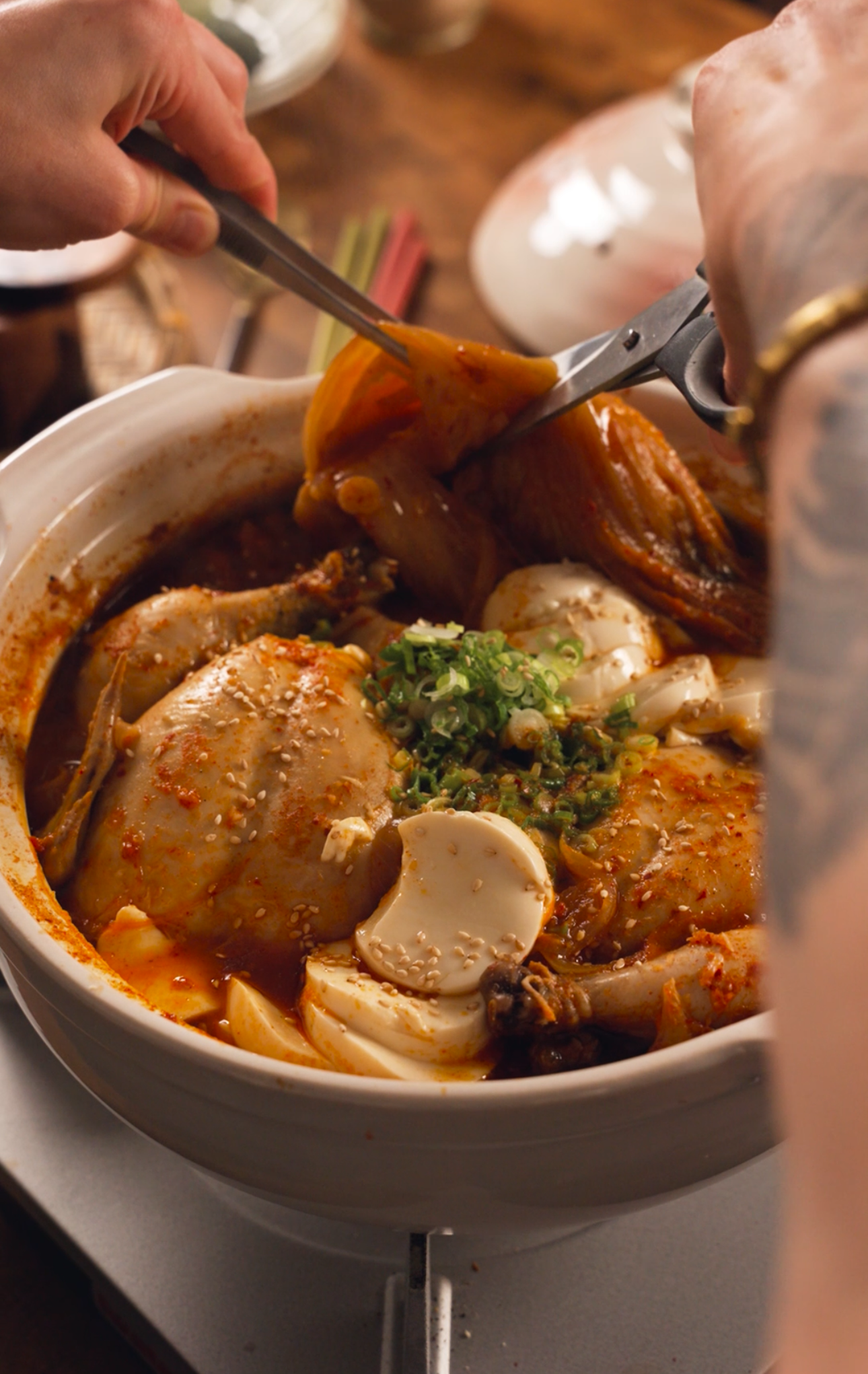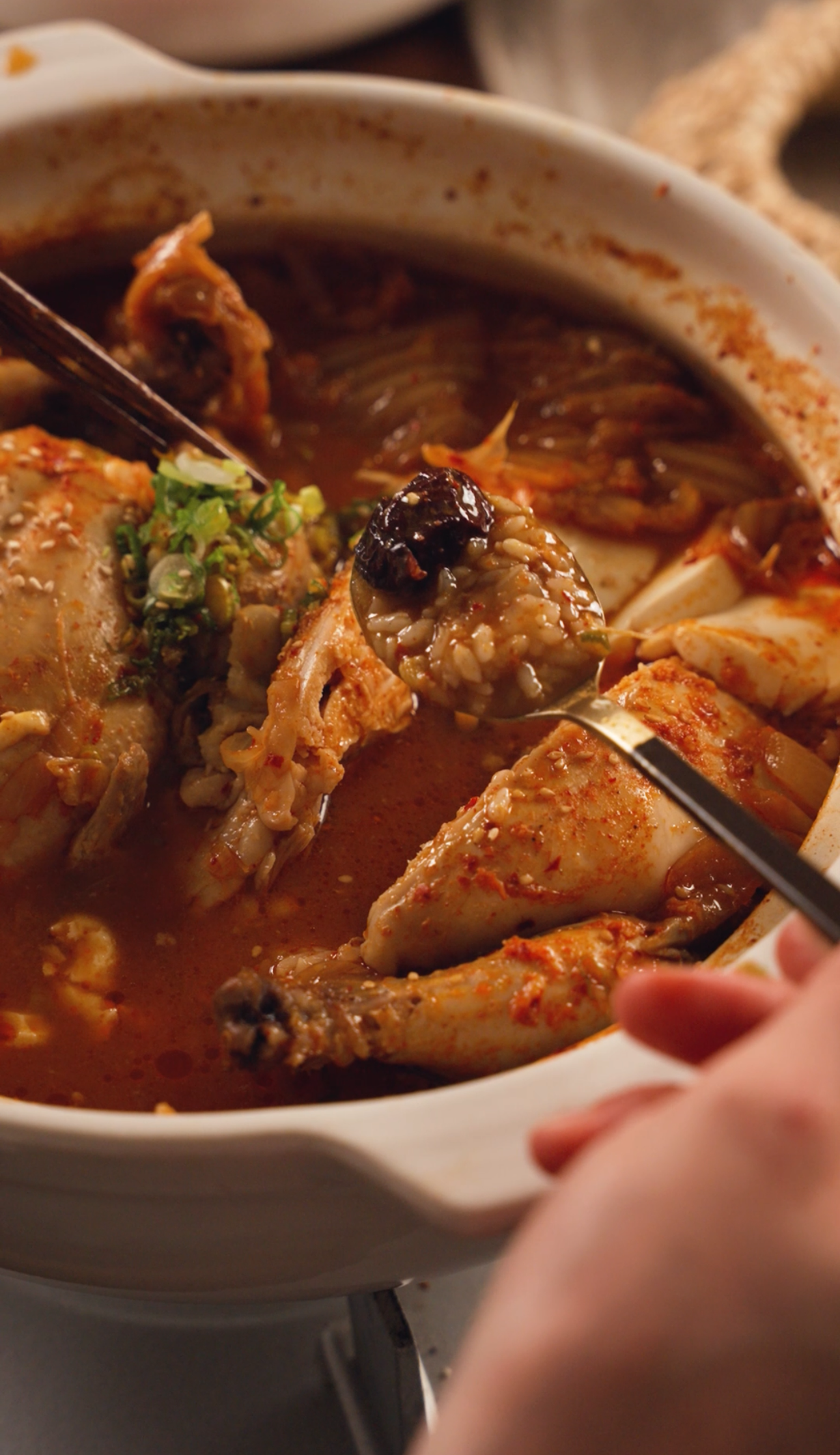Samgyetang x Kimchi Jjigae
Watch the video tutorial for this recipe on my Youtube Channel!
I’ve said it once and I’ll say it again:
If you put a pot of Kimchi Jjigae in front of me, I’ll try to eat the whole thing.
Is that part of the reason why I decided to make this fusion dish? Maybe.
Apparently two whole hens inside my soup does pose quite a challenge on that front.
Yes this is a fusion of two of my favourite Korean stews: Samgyetang and Kimchi Jjigae.
Both so comforting a warm… they are like eating a hug!
What sets this stew apart (from just being a Kimchi Jjigae with chicken in it) is that each of the Cornish hens are stuffed with glutinous rice, ginseng, jujubes and garlic— just like that of a Samgyetang!
This stew is really what dreams are made of!
Try this recipe of mine if you’re looking for a Classic Kimchi Jjigae
Let’s make it!
Recipe:
Serves 3-4 people
Special Equipment:
a pot (No.9 Donabe 23-25cm)
kitchen twine
scissors
Samgyetang x Kimchi Jjigae
2 Cornish Hens
1/2 tbsp salt
1/3 cup sweet glutinous rice
1 fresh ginseng root (sub dried*)
2 cloves of garlic
4 jujubes
water for soaking and rinsing rice
1.5 cups starchy rice water (leftover from rinsing rice)
1 tbsp sugar
1 tbsp gochujang
1 tbsp fine gochugaru
1 tbsp fish sauce
1/2 head well-fermented kimchi (about 1.5 cups chopped)
1/4 cup kimchi juice
3 cups water
6 cloves garlic, minced (for soup)
1/2 white onion, sliced
3 tsp sesame oil
1/2 tsp ground black pepper
1 pckg soon tofu (soft tofu)
green onion
sesame seeds (garnish)
For the Cornish Hens:
Measure out your glutinous rice and add it to a bowl. Add water and swish the rice around, as you would when washing rice. Instead of discarding the initial water, we will pour it into a measuring cup, reserving it to use inside the soup later. About 1.5 cups worth!
Continue to wash your rice until the water runs clear. At the end, pour 2 cups of fresh water into the bowl. Set it aside to soak for 30 minutes.
Meanwhile, prep your hens by removing from the packaging, and disposing of any blood or juices. Check the inside cavity for any organs and discard if present. Pat them dry all around with a paper towel.
Sprinkle the hens with liberal amount of salt, on the skin and inside the cavity. Use your hands to “scrub” the skin, giving them a nice exfoliating massage. This will make the skin nice and supple with a better texture once cooked.
Once the rice has soaked for at least 30 minutes, you can begin to stuff the hens.
Break the cleaned ginseng into 2 smaller pieces.
Place one piece of ginseng, 2 jujubes and 1 clove of garlic into each hen.
Prop the hens up so that you have an easier time shoveling the rice inside the cavity.
Stuff half of your rice into one hen, and the other half of the rice into the other!
Use kitchen twine to tie up the hens so that they don’t explode rice into the pot.
Here is a good tutorial if you are struggling!
One securely tied, set them aside!
For the seasonings:
Peel and thinly slice your onion. Mince the 6 cloves of garlic. Set aside.
In the measuring cup with the rice water, add your gochujang, sugar, fine gochugaru and fish sauce. Stir to combine.
Cooking the soup:
To a medium pot, add your 1/2 head of kimchi, the 2 stuffed hens, the onions, & minced garlic.
Add the rice water/gochujang mixture. Add the kimchi juice and 3 cups of water or until the liquid just about covers the chickens.
Turn the heat up under the pot. As soon as it starts to boil, reduce the heat and bring to a simmer. Cover the pot with a lid and allow the soup to cook for 40 minutes on low. Check the pot at the mark to assess the chickens, rotate if necessary.
After 40 mins, check the hens to see how tender they are. If it can’t easily tear apart, then cook for another 15 or so minutes.
If ready, turn off the heat and add the sesame oil and black pepper to finish, along with the soon tofu. Cover with a lid and simmer for another 5 minutes.
Turn off the heat. Transfer the pot to a trivet. Top with any extra garnishes.(green onion and sesame seeds).
For better/ easier communal serving, use scissors to cut the kimchi into smaller, bite sized pieces.
As well, cut through the strings on the chicken and remove them from the pot. Cut into the centre of the breast of each hen to “split them open” revealing the glutinous rice inside!
Any leftovers can be stored in an airtight container after cooling down. This will last in the fridge for about 5-6 days.
*Notes:
If you want to save time and energy, you can buy Frozen, ready-made Samgyetang Kits! Just thaw them and use the chicken inside and replace the water in my recipe with the broth in the pouch!
Sometimes fresh ginseng is expensive/ can be hard to find. Instead, you can buy prepackaged Samgyetang making kits that come with all the dried ingredients that you will need to stuff you chickens with.
Make sure you use well-fermented kimchi! If yours is already chopped, don’t worry— it will work just as well.
To make this shellfish free, substitute the fish sauce with soy sauce.
Make sure your kimchi is vegan as well.I’m using a No.9 Donabe pot (23-25cm). This holds enough food to serve 3-4 people.
Enjoy!!
